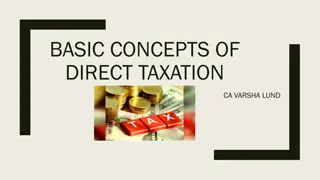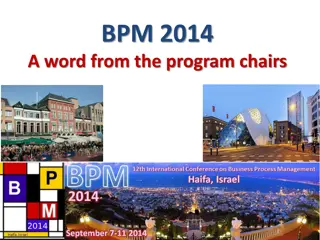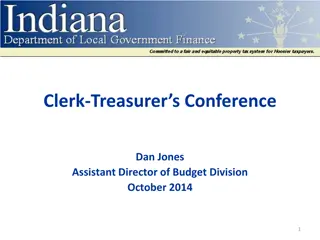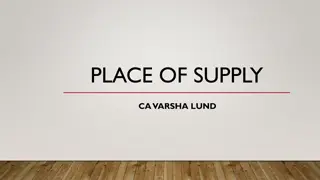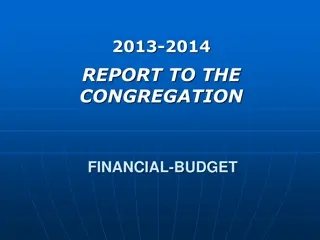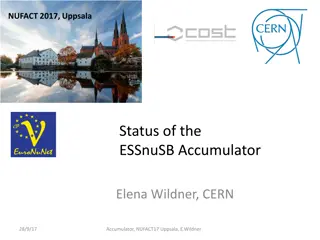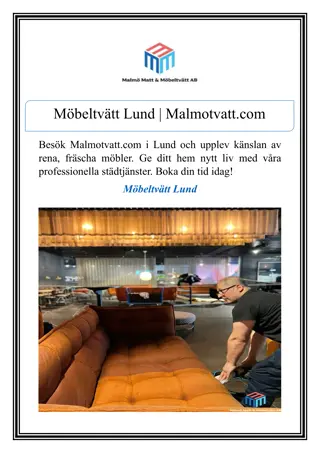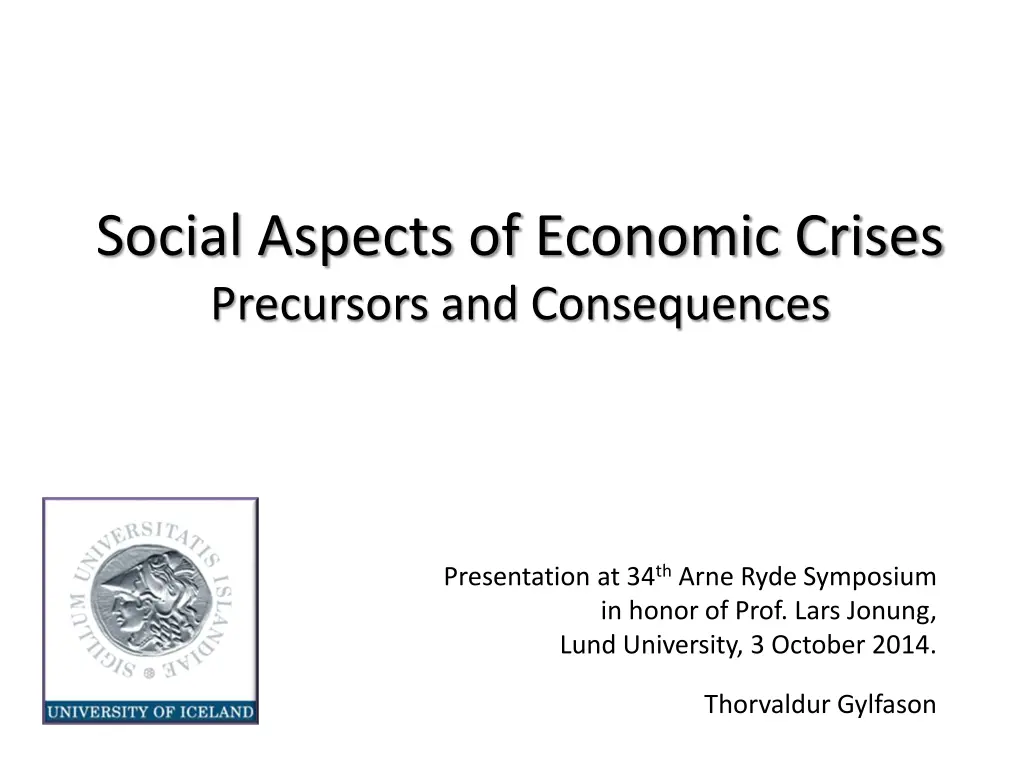
Understanding Social Aspects of Economic Crises: Precursors and Consequences
Explore the intricate relationship between social capital, inequality, and financial crises through a detailed analysis of historical trends and case studies, shedding light on the impact of broken trust on economic performance and prospects for reform and growth.
Download Presentation

Please find below an Image/Link to download the presentation.
The content on the website is provided AS IS for your information and personal use only. It may not be sold, licensed, or shared on other websites without obtaining consent from the author. If you encounter any issues during the download, it is possible that the publisher has removed the file from their server.
You are allowed to download the files provided on this website for personal or commercial use, subject to the condition that they are used lawfully. All files are the property of their respective owners.
The content on the website is provided AS IS for your information and personal use only. It may not be sold, licensed, or shared on other websites without obtaining consent from the author.
E N D
Presentation Transcript
Social Aspects of Economic Crises Precursors and Consequences Presentation at 34thArne Ryde Symposium in honor of Prof. Lars Jonung, Lund University, 3 October 2014. Thorvaldur Gylfason
Overview Social capital as a source of growth Frayed social capital as a precursor as well as consequence of slow growth and of economic crises From inequality via crises to broken trust Social and economic indicators side by side (Deaton, 2013) Inequality and crises, 1920-1929 and 1990-2008 Inequality and trust in Sweden vs. US and Iceland Nordic countries: Big divergence since 2000 Gathering clouds Broken trust undermines economic performance Uncertain prospects for reform and restoration of trust, prosperity, and growth
From inequality to instability Increased inequality appears to breed, or at least precede, financial crises Roaring 1920s preceded Great Depression Galbraith s The Great Crash 1929 (1988) Financial deregulation with attendant rise of the 1% (and 0.1%) preceded fall of Lehman Brothers Galbraith s Inequality and Instability (2012) Ratio of US executive salaries to ordinary salaries rose from 30 in 1960s to 270 in 2008 (Economic Policy Institute, 2011) Piketty s Capital (2014) covers both episodes, and more Share of top 10% in US national income rose from 40% to 50% from 1920 to 1929 and again from 1990 to 2008 compared with 20% in Scandinavia and 25% in rest of Europe
Iceland fits the pattern Iceland: Inequality of disposable income 1993-2009 Deregulation without markedly increased inequality preceded Nordic financial crisis of 1989- 1994 (Jonung et al., 2009) Denmark escaped crisis Like Finland, Norway, and Sweden, Iceland also had its financial crisis, but it was covered up, paving the way off the cliff in 2008 Increased inequality after 1995 was also covered up Source: Internal Revenue Directorate, http://www.rsk.is/.
Share of top 1% in total income (%) United States Sweden 30 16 14 25 12 20 10 15 8 6 10 4 5 2 0 0 1920-1929 1990-2008 1920-1929 1990-2008 Did increased inequality cause financial crash or were both consequences of recklessness? Source: Piketty (2014).
Share of top 0.1% in total income (%) United States Sweden 9 6 8 5 7 6 4 5 3 4 3 2 2 1 1 0 0 1920-1929 1990-2008 1920-1929 1990-2008 Source: Piketty (2014).
Iceland: Share of top 10% and top 1% in total disposable income (%) Top 10% Top 1% 45 45 40 40 35 35 30 30 25 25 20 20 15 15 10 10 5 5 0 0 Source: Internal Revenue Directorate, http://www.rsk.is/.
Per capita income and hours of work (GNI in current international $, ppp) GNI per capita 1980-2012 Hours per employee 1950-2012 70000 3000 Denmark 60000 2500 Finland 50000 2000 Iceland 40000 Norway 1500 Denmark 30000 Sweden Finland 1000 Iceland 20000 Norway 500 10000 Sweden 0 0 Source: World Bank World Development Indicators and The Conference Board Total Economy Database , January 2013, http://www.conference-board.org/data/economydatabase/.
Income per hour and hours of work (GNI in current international $, ppp) Hours per person 1990-2012 GNI per hour of work 1990-2012 1800 80 Denmark 70 1500 Finland 60 Iceland 1200 50 Norway 900 40 Sweden Denmark 30 Finland 600 Iceland 20 Norway 300 Sweden 10 0 0 Source: The Conference Board Total Economy Database , January 2013, http://www.conference- board.org/data/economydatabase/ and author s computations based on preceding charts.
Unemployment and inflation (in %) Unemployment 1980-2012 Inflation 1961-2012 18 90 Denmark Denmark 16 80 Finland Finland 14 70 Iceland Iceland 12 60 Norway Norway 10 50 Sweden Sweden 8 40 6 30 4 20 2 10 0 0 -10 Source: World Bank World Development Indicators.
Gross capital formation (% of GDP, % of GNI) Iceland: Collapse of net investment (% of GDP) Gross capital formation 1965-2012 Adjusted net saving 2005-2012 30% 20% 30 60 Denmark 10% Denmark Finland Iceland Finland 25 0% 50 Norway Sweden Iceland -10% 20 Norway 40 Sweden 15 30 10 20 5 0 10 -5 0 -10 Source: World Bank World Development Indicators.
Longevity and fertility (1960-2012) Life expectancy (years) Fertility (births per woman) 84 5 Denmark Denmark 4.5 82 Finland Finland 4 80 Iceland 3.5 Iceland Norway 78 3 Norway Sweden 76 2.5 Sweden 2 74 1.5 72 1 70 0.5 68 0 Source: World Bank World Development Indicators.
Corruption 2012 Business corruption Political corruption 92 80 70 90 60 88 50 86 40 84 30 82 20 80 10 78 0 Source: Gallup, Source: Transparency International. http://www.gallup.com/poll/165476/government- corruption-viewed-pervasive-worldwide.aspx.
Interpersonal trust and trust in institutions Trust in other people Iceland: Trust in institutions 2013 160 90 80 140 70 120 60 50 100 40 80 30 20 60 10 40 0 20 0 Iceland 1999 Finland 2005 Denmark 1999 Sweden 2006 Norway 2007 Source: World Values Survey. Source: Capacent.
Sweden and US: Trust in institutions (% answering Yes to Do you have a great deal or quite a lot of confidence in the courts, etc. ?) 90 Sweden US 80 70 60 50 40 30 20 10 0 Source: World Values Survey.
Discussion Financial crises can, in part, be traced to weaker social cohesion, with long-lasting economic effects threatening to further weaken social capital by undermining trust, boosting chauvinism, etc. No prosecutions of bank CEOs in US James Galbraith and Bill Black are severely critical of this Citing FBI, Black insists that all major US banks broke laws Some banks have paid fines, their CEOs unpunished Rise of chauvinism and extremism in Europe Hungary, Finland, Sweden, Iceland Weakening of US and Europe plays into Russia s hand in Ukraine Iceland s Parliament is trying to steal the constitution
References Deaton, Angus (2013), The Great Escape: Health, Wealth, and the Origins of Inequality, Princeton University Press, Princeton and Oxford. Galbraith, James K. (2012), Inequality and Instability: A Study of the World Economy Just Before the Great Crisis, Oxford University Press, Oxford and New York. Galbraith, John Kenneth (1988), The Great Crash 1929, Houghton Mifflin Company, Boston. Jonung, Lars, Jaako Kiander, and Pentti Vartia (2009), The Great Financial Crisis in Finland and Sweden: The Nordic Experience of Financial Liberalization, Edward Elgar, Cheltenham, UK, and Northampton, MA, USA. Piketty, Thomas (2014), Capital in the Twenty-first Century, Harvard University Press, Cambridge, MA, USA and London, England. Rajan, Raghuram G. (2011), Fault Lines: How Hidden Fractures Still Threaten the World Economy, Princeton University Press, Princeton and Oxford. Reinhart, Carmen M., and Kenneth S. Rogoff (2009), This Time is Different: Eight Centuries of Financial Folly, Princeton University Press, Princeton and Oxford. World Values Survey, Accessed October 1, 2014, http://www.worldvaluessurvey.org/WVSContents.jsp




